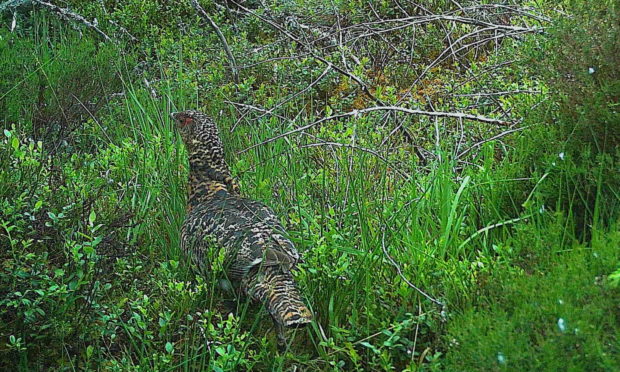A new study has revealed that capercaillie numbers will continue to decline unless the birds are given help to breed.
Freshly published findings into the breeding and dispersal of the species was undertaken over four years at Strathspey.
Researchers concluded that, without intervention to improve breeding success, it is likely that the numbers of the already-threatened species will plummet.
The Scottish capercaillie has been declining in range and population since the 1970s, and now there may be fewer than 1,000 birds remaining – chiefly in Strathspey.
The Scottish Wildlife Trust has attributed the decline to the birds flying into deer fencing and chick mortality due to wet and cool weather.
This latest study, involving the radio-tagging of six females, allowed 12 possible breeding attempts to be followed.
Nine clutches were laid of which six then hatched, with three probably eaten by pine martens. Only two chicks were ultimately born.
Kathy Fletcher, one of the research team, said: “This study highlights just how low capercaillie breeding success is now in the heart of its range.
“If we wish to have any chance of stabilising numbers, it will require further studies that focus on why chick survival is so low, with subsequent landscape management interventions.”
Though predominantly found in the Highlands, capercaillie are also found in Aberdeenshire.
Parts of the Glen Tanar Nature Reserve, near Aboyne, were closed off last year when a male capercaillie was “displaying” and “holding its ground” on some of the trails.
The activity, known as “lekking”, is designed to entice visiting females which are surveying prospective partners.
